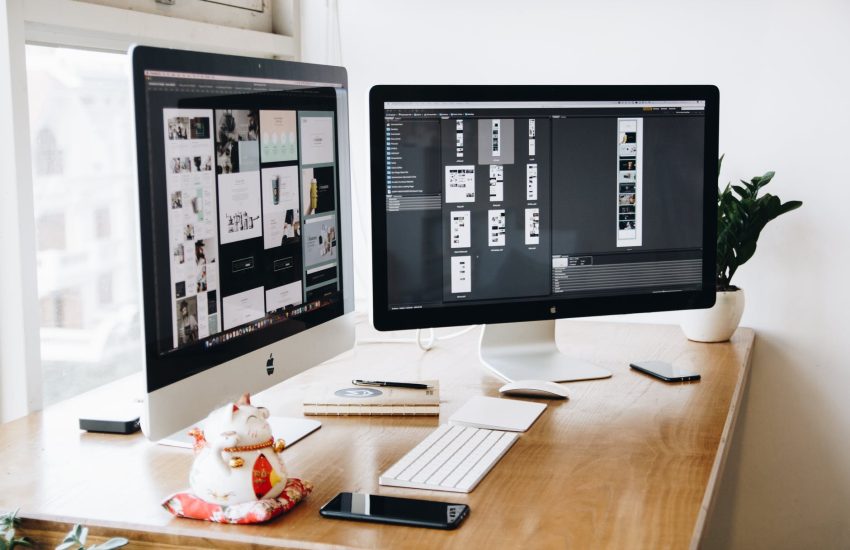Web Design: 11 Characteristics of a User-Friendly E-commerce Website
It may come as a surprise, but many small businesses still don’t have a website. For those who were in a rush to put their site up, they didn’t make it easy for web users to use. Therefore, a site with excellent usability shouldn’t be underestimated and is crucial for a successful website.
There are many aspects every business website needs to succeed, and excellent usability is one of them. It boosts your website performance and builds your business success. Over time, it improves sales and business revenue.
So what makes the website user-friendly? There are several factors, let’s take a look at the top characteristics:
1. Minimalist Design
When crafting an effective website design, adopt the mindset, “less is more.”
Think about it this way ‒ the more options that you present people, the easier it will be for them to choose nothing at all. That’s true in the case of your web design. Creating too many options can easily overwhelm visitors. As a result, it increases the amount of time for them to make a decision.
Remember that people come to your site with a clear purpose in mind. That purpose isn’t to admire all those fancy graphic designs and layouts. While they can be aesthetically pleasing, you don’t want to end up distracting users to what they came for in your site in the first place.
So don’t waste your time and money on unnecessary decorations. Focus on creating sleek, and simple designs that make your site easily navigatable, so that users can find information more quickly.
Moreover, learn how to use white space strategically. In its most basic form, a white space aka negative space ‒ are the different areas of your site that is left empty on purpose.
Websites that don’t have enough white space may look cluttered, confusing, and sometimes, off-putting.
So focus on placing white spaces in your site to make it look sophisticated, clean, and professional. It also helps users focus on the more important elements of your site.
2. Easy Navigation
Excellent navigation is a crucial aspect of website usability. It has to be free from clutter, therefore try to keep the menu items at a bare minimum. Usually, a sub-navigation or a drop-down menu works best with a site with multiple sections.
Moreover, make sure that your site visitors will not land on a 404 page. As this can also disrupt their user experience. You can prevent that by redirecting your dead pages to the right one. If you are on WordPress, there a lot of available 301 redirect for WordPress plugins.
Users today want and need things to be navigatable and straightforward as possible. Instead of building multiple-page navigations and complicated page names, name each page appropriately and clearly. Moreover, keep the sub navigations as simple as much as you can.
3. Accessible to All Users
A user-friendly site should be accessible to all users, including the elderly, and persons with disability. These users tend to use screen readers to gain access to the internet.
The 508 website accessibility guidelines feature straightforward design techniques that can be utilized to make sure your site is easily accessible on on-screen readers ‒ as a result, making your website available primarily to a broader audience.
4. Aesthetics are everything
Note that three of the most crucial aesthetic elements when creating an effective website design are typography, color, and balance.
Colors, as you know, tend to elicit different emotional responses. When selecting the right color hue for your site, try to create a balance between harmony and contrast.
Highly contrasting colors like pink and lime green can be distracting. Instead, choose colors of the same color family.
Bold and bright tones are usually used for a call to action buttons so that will stand out. But generally, avoid them in using backgrounds for your site. Consistency is vital, and always keep your audience in mind.
In the same way, typography also holds power on the overall feel of your site. Ornate and cursive fonts depict an air of seriousness and sophistication, while Sans Serif fonts create a more modern and streamlined feel.
For more effective web design, keep a few font rules into mind. Choose Sans Serif fonts for body text, with a maximum of three typefaces, then a font size of 12-16 pts.
Creating a well-balanced page can be tricky. You can apply the famous “the rule of thirds” principle on your web design.
The rule dictates that if there is a three-by-three grid over a webpage (or an image,) the most eye-catching areas would be where these grid lines intersect. Therefore, the most vital elements of your site should be placed in these areas.
5. Content That Is Easy to Scan and Well-Formatted
Most internet users merely skim through the page, instead of reading word by word. They’ll scan through the key areas to quickly determine if it’s relevant to them, and their needs.
That’s why it’s crucial to format your content with this in mind. Use the right headings, subheadings, paragraphs, lists, and bullets to break up the text. As a result, it’s easier for them to scan.
6. Optimized Site
SEO is crucial if you want a successful site. That’s why you have to optimize essential elements such as meta tags and titles for your pages.
Moreover, utilizing headers and alt tags for images significantly helps with optimization and accessibility. Even if you are strong in other areas but weak in optimization, it makes it harder for your site to be visible on search engines.
7. Browser Consistency
Browser compatibility is another element that’s easily overlooked. Even big companies suffer from this because of neglect. However, it hurts your overall branding as well as website usability.
That’s why it’s crucial that your site appears consistently on different browsers such as the Internet Explorer, Chrome, Firefox, Opera and Safari. Fixing simple things like these can make your website stand out from the rest.
8. Smooth Web Design Flow
Strive for a website that isn’t just visually appealing. Instead, the overall design should have a smooth flow or transition.
Most users read web pages using the “E Format.” They would start scanning sites on the upper left corner, move across to the right, moving downwards on the left side, then back again across the page to the right for about one or two times.
Ideally, with this format, you need to put the most vital information on the top left corner, and the least important on the bottom right as this is the most overlooked area.
9. Don’t Forget About User Experience (UX)
The success of your website depends heavily on its usability and functionality. Having a beautiful site means nothing if you don’t give users an optimal user experience. That’s why, during the site design, it’s crucial that you always put your users into mind, as well as how you can cater to their needs.
For effective navigation, take note of the clickable buttons and the logical page hierarchy. It should take minimal effort for users to access your site and perform the desired action.
The best way to know if you have optimal UX is to run tests on your site. Chances are, you might overlook minor issues in which some users might encounter in your website. Routinely check if all the links work correctly, and everything shows up where it needs to be.
10. Valid Mark-Up & Clean Code
Make sure that your site follows with relevant design practices and standards. That only goes to show that you have a website that’s solid and dependable.
It also sees to it that looks consistent in all browsers and devices, and loads faster. As a result, it’s easier to locate problems and troubleshoot anything in the future.
Over to You
Strive for a site that has excellent usability, as it plays a vital role in the overall success of your site and business. As you work on building your website, or just upgrading your existing one, ensure that it displays usability characteristics.It also helps that you work closely with a web design company in the Philippines. That way, you’re more confident that you’re setting up your business for success in the long run.


















